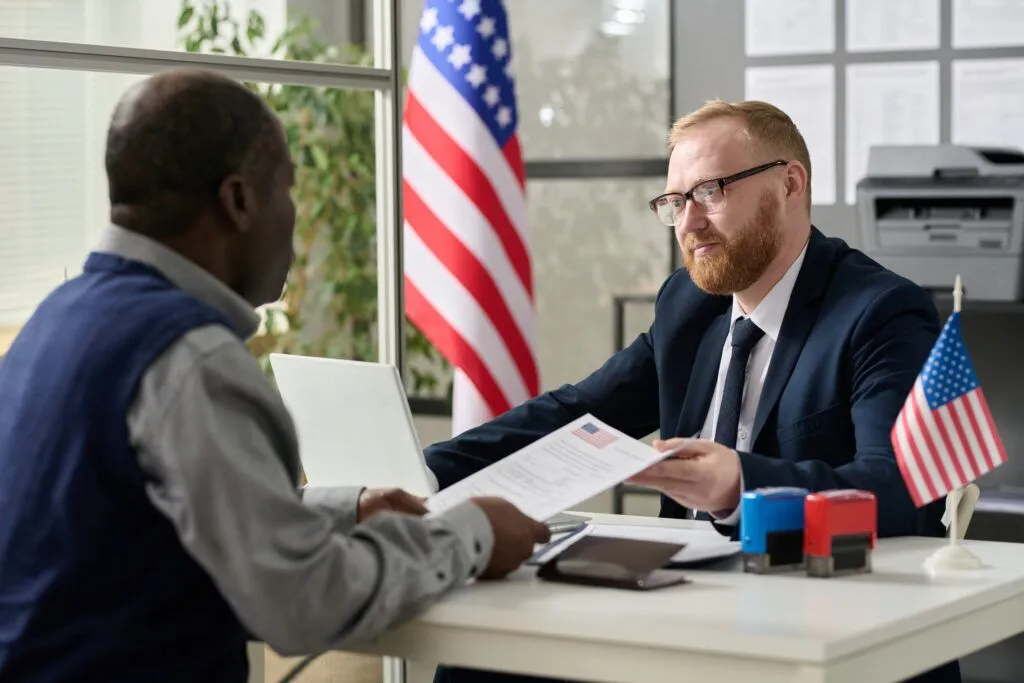
H-1B And Employment Visa
Navigating the U.S. immigration system can be complex, especially when it comes to obtaining work visas. The H-1B visa is one of the most sought-after work visas for foreign professionals seeking employment in the United States. At The RP Law Firm, we specialize in helping individuals and employers understand the intricacies of the H-1B visa process and other work visa options, ensuring a smooth and successful application experience.
The H-1B visa is a non-immigrant work visa that allows U.S. employers to temporarily employ foreign workers in specialty occupations. A specialty occupation typically requires a higher education degree or its equivalent in a specific field. Common fields for H-1B employment include:
- Information Technology
- Engineering
- Medicine and Healthcare
- Education
- Business and Finance
- Science and Research
- Duration: The H-1B visa is initially granted for up to three years, with the possibility of extension for a total of six years. In certain cases, extensions beyond six years may be available if the worker is in the process of obtaining a green card.
- Employer Sponsorship: The H-1B visa requires employer sponsorship. This means that a U.S. employer must file a petition on behalf of the foreign worker.
- Cap on Visas: There is an annual cap on the number of H-1B visas issued, which can lead to a competitive application process. Currently, the cap is set at 65,000 visas per fiscal year, with an additional 20,000 visas available for individuals with a master’s degree or higher from a U.S. institution.
- Dual Intent: The H-1B visa allows for dual intent, meaning that holders can apply for a green card while on an H-1B visa without jeopardizing their non-immigrant status.
The application process for the H-1B visa involves several key steps:
Step 1: Employer Determines Eligibility
The U.S. employer must first determine if the job qualifies as a specialty occupation and if the foreign worker meets the necessary qualifications. This includes having the required education, experience, and skills for the position.
Step 2: Labor Condition Application (LCA)
Before filing the H-1B petition, the employer must submit a Labor Condition Application (LCA) to the U.S. Department of Labor (DOL). The LCA ensures that the employer will pay the prevailing wage for the position and that hiring the foreign worker will not negatively impact the working conditions of U.S. workers.
Step 3: Filing the H-1B Petition
Once the LCA is approved, the employer can file Form I-129, Petition for a Nonimmigrant Worker, with USCIS. This petition must include supporting documentation, such as the approved LCA, evidence of the employee’s qualifications, and details about the job offer.
Step 4: USCIS Processing
After the petition is submitted, USCIS will review the application. Processing times can vary, and employers may opt for premium processing for expedited review, which guarantees a decision within 15 calendar days for an additional fee.
Step 5: Visa Application
If the petition is approved, the foreign worker must apply for the H-1B visa at a U.S. consulate or embassy in their home country. This involves submitting Form DS-160, the Online Nonimmigrant Visa Application, and attending an interview.
Step 6: Entry to the U.S.
Once the visa is granted, the foreign worker can enter the U.S. and begin employment with the sponsoring employer.
While the H-1B visa is one of the most popular work visas, there are several other visa categories that may be suitable for foreign workers, including:
Temporary Work Visas
-
H-2B Visa (Non-Agricultural Workers)
Designed for seasonal or temporary non-agricultural work.
Employers must demonstrate a temporary labor shortage and prove that no qualified U.S. workers are available. -
H-2A Visa (Agricultural Workers)
Used for temporary agricultural work.
Commonly utilized by U.S. farmers to address seasonal labor shortages. -
P Visa (Athletes, Artists, and Entertainers)
Issued for individuals participating in athletics, entertainment, or culturally unique programs in the U.S.
Includes athletes, artists, entertainers, and their essential support staff.
Permanent Work Visas (Green Cards)
-
EB-1 (Priority Workers)
Reserved for individuals with extraordinary ability in sciences, arts, education, business, or athletics.
Also available for outstanding professors, researchers, and multinational executives. -
EB-2 (Advanced Degree or Exceptional Ability)
Requires a job offer and labor certification, though exceptions apply for national interest waivers.
Intended for professionals with advanced degrees or exceptional abilities in their field. -
EB-3 (Skilled Workers and Professionals)
For skilled workers with at least two years of experience.
Also includes professionals with a bachelor's degree. -
EB-4 (Special Immigrants)
Designed for specific groups such as religious workers, broadcasters, and other niche categories. -
EB-5 (Investor Visa)
Requires a significant investment (typically $1.05 million or $800,000 in targeted employment areas) in a U.S. business.
Must create at least 10 full-time jobs for U.S. workers.
